Best Cheap Distortion Pedal List to Blow Your Socks Off in 2024
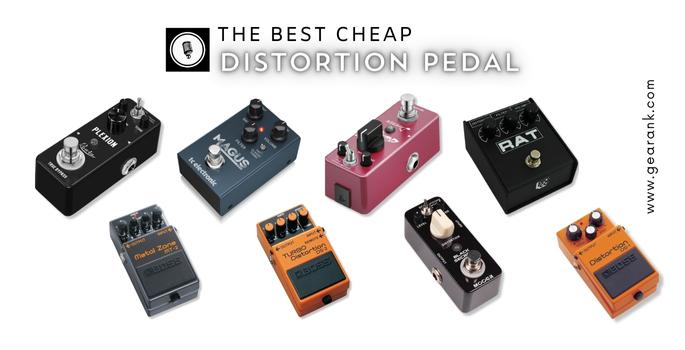
Author & Contributors
Raphael Pulgar
I've been an audio engineer for 20 years specializing in rock and metal recordings. I also play guitar and produce original music for my band and other content creators.
Best Cheap Distortion Pedals under $50
Rowin Plexion
Cons
- Noise issues with some power supplies and outlets
- Sounds muddy in some settings
Pros
- Straightforward controls
- Compact form factor
- Wide range of gain settings suitable for many genres
The Rowin Plexion is an affordable, compact distortion pedal with 2 gain modes (Normal and Bright), much like the amp it was modeled after.
This "Plexi-drive" style mini guitar pedal offers an array of low gain tones as well as access to "hot-rodded" higher gain tones.
In normal mode, simulating the "normal" input of the famed Plexi amp, the amount of gain applied is not over the top. This results in a sophisticated and full distorted tone with a nice bottom-end push.
On bright mode, it takes on familiar tones from the 80s with tighter palm mute tones and sizzling highs.
The Rowin Plexion is the best distortion pedal that gets you close to the best British amp tones of the 70s, 80s, and beyond at a very affordable price point.
Specifications
- Controls: Volume, Gain, Tone, Normal/Bright Toggle
- Analog
- True Bypass
- 9-Volt Adapter (Sold Separately)
| Website | Source | *Rating Value |
| YouTube | Taylor Morgeson | 96/100 |
| YouTube | DutchGuitarDude | 92/100 |
Demo
Donner Morpher
Cons
- Noisy with an unfiltered power supply
- Tendency to fizz up at higher gain settings
Pros
- Great for thick tones
- Midrange push makes solos stand out in a mix
- "Tight" setting capable of serving modern metal (it chugs)
Modern rock and metal have come a long way from the scooped midrange tones of the 80s and 90s. The Donner Morpher is one "riot" of a pedal with a modern take on the high gain distortion.
It features three different gain toggle settings as well as Level, Gain, and Tone control knobs. The circuitry is housed in an all-metal enclosure.
The mode switch enables you to go from Natural mode: a thick-sounding overdrive pedal tone. The Tight mode for modern sounding distortion to Classic mode: a UK-style gain response perfect for classic rock and hard rock.
The tonal options also make it a sleeper favorite as a modern metal pedal.
The Donner Morpher is a gem of a pedal at this price range - excellent for thick leads and modern heavy riffing. And it does so better than most distortion pedals at this price.
Specifications
- Controls: Tone, Level, Gain, 3 way Toggle for gain settings
- Analog
- Buffered Bypass
- 9-Volt Adapter (Sold Separately)
| Website | Source | *Rating Value |
| YouTube | Tim Guitar | 90/100 |
| YouTube | Justus Gash | 93/100 |
Mooer Black Secret
Cons
- Less heavy-duty than a Proco RAT
- Can get noisy with single coils
Pros
- Great alternative to the ProCo RAT
- Nice, thick low mids
- Very versatile distortion
The Mooer Black Secret is a distortion pedal with a hard-hitting, saturated gain, ideal for rock and metal genres. This pedal pays homage to the ProCo RAT distortion pedal and features two modes, Vintage and Turbo RAT, which provide a broad spectrum of tonal options.
The Black Secret's Vintage mode has a traditional ProCo RAT sound, with a more responsive bottom-mids sound. The Turbo RAT mode provides a more aggressive and edgy distortion. It is worth noting that this pedal can produce a bright overdrive, gritty distortion, and hairy fuzz, depending on the knob setting.
The Black Secret's design is compact and fits nicely on any pedalboard without taking up much space. It also has a true bypass, ensuring the signal remains clean and free of coloration when the pedal is off.
While the pedal provides an aggressive and gritty distortion sound, it appears less heavy-duty than a ProCo RAT. Additionally, it produces a lot of noise on single-coil pickups.
The Mooer Black Secret is a cost-effective option for those looking for a raw and unapologetic distortion sound. It is an exceptional choice for those who want to achieve a classic ProCo RAT sound with a contemporary flair.
Specifications
- Controls:Level, Distortion, Filter, and Vintage/Turbo Toggle
- Analog
- True Bypass
- 9-Volt Adapter (Sold Separately)
Best Distortion Pedals under $100
Boss DS-1
Cons
- Noisy operation at high gain settings
- Can sound harsh, thin, and annoying
- Needs a real amp and cab to sound good
Pros
- Boss compact pedal tried and true reliability
- Versatile sound that works with lots of genres
- Excellent price-to-performance for a benchmark pedal
If we're talking about great distortion pedals, the DS-1 is not to be ignored. The DS-1 Distortion pedal has made its way into my setup more than once or twice in my playing career.
I was enamored by its simplicity, ruggedness, and sheer ability to mangle a pristine amp tone. This is a pedal I know well.
The DS-1 has a sound and feel that I describe as "real." It has a great way of distorting your guitar signal while retaining the characteristic sound of your guitar. Being analog ensures no latency whatsoever. It's comparable to a carburetor-equipped car as opposed to a fuel injection-powered car, to use an analogy - completely connected to your tone.

It runs the risk of being thin and shrill at times, and I would sometimes use it as a simple boost for amps with an already good drive channel.
It works great for punk music, and with the volume pot on your guitar rolled off is great for some blues and pop alternatives. But lacking the dual-stage chug that something like a Boss MT-2 has, I don't see it succeeding in many metal situations.
It has the standard but tank-like enclosure common to many Boss pedals.
It's good to have such an iconic guitar pedal in your arsenal. You won't reach for it that often, especially if you don't have an amp that has opposite tonal characteristics (extremely clean and warm).
Many would be quick to dismiss the DS-1 in favor of boutique pedals. But give it a shot, and it might be the perfect blend of sweet and nasty your guitar sound needs.
Specifications
- Controls: Tone, Level, Distortion
- Analog
- Buffered Bypass
- 9-Volt Adapter/Battery (Sold Separately)
- Artists: Kurt Cobain, Joe Satriani, Steve Vai, Josh Klinghoffer
| Website | Source | *Rating Value |
| Gearank | Alden Acosta | 84/100 |
| Guitar Chalk | Bobby | 76.75/100 |
Demo
TC Electronic Magus Pro
Cons
- Quieter than a RAT
- Weird switching mechanism activates on release
Pros
- 3 Distinct RAT style tones
- Topmounted jacks make it easy to fit into small pedalboards
- Lots of gain from light crunch to sludgy doom grind
The TC Electronic Magus Pro is a budget-friendly, high-gain distortion stompbox with versatile features without compromising sound quality. It boasts three distinct clipping styles - FAT, Classic, and Turbo - to provide warm, vintage tones or aggressive, modern distortion. The pedal's circuitry replicates the highly sought-after LM308 op-amp, producing harmonically rich and warm sounds. The Filter knob allows for precise control of excessive treble and helps maintain clarity.
This compact pedal is designed with top-mounted jacks, making it pedalboard-friendly and ideal for tight spaces. The Magus Pro's sound quality is impressive, ranging from almost clean crunch to saturated, filthy tones. It retains clarity without becoming overly raspy, making it suitable for various playing styles. The pedal responds dynamically to different playing styles, making it perfect for riffing and soloing.
The Magus Pro is an excellent alternative to the original RAT pedal, offering similar circuitry inspired by the LM308 op-amp and greater versatility. Its sturdy build ensures durability, making it a reliable choice for the stage or studio. However, it may not be suitable for those seeking an authentic punk-rock sound as the pedal has removed the noise that a RAT pedal produces. Additionally, the switching mechanism activates only after you release it, which may annoy some.
The TC Electronic Magus Pro is an excellent choice for guitarists seeking a high-gain distortion pedal with a versatile range of features and exceptional sound quality.
Specifications
- Controls:Gain, Volume, Filter, and Fat/Classic/Turbo Toggle
- Analog
- True Bypass
- 9-Volt Adapter (Sold Separately)
ProCo RAT 2
Cons
- Overly distinct at times - not a chameleon pedal
- Not suitable for modern metal
Pros
- Easy to operate
- Full sounding bottom end
- Sonic versatility with staple tones at low, medium and high gain levels
The RAT 2 is a surprisingly versatile distortion pedal with an unmistakable sound signature. It leans more to the "fuzz" side of the spectrum than many pedals featured on this list. The pedal is still capable of everything from light overdrive to heavy levels of distortion, which makes it difficult to categorize between Overdrive vs Distortion.
Fuzz, while similar to distortion, has a different character. For a good example, think of Jack White's tone vs classic rock tones. The RAT 2, while primarily a distortion pedal, still has some of the characteristics of fuzz, like growl and sputter. This is most evident at high distortion levels.
It is a staple pedal for doom and stoner metal bands, especially when pairing it with an already crunchy vintage amp like a Sunn.
The unit features a 'Filter' control that allows you to roll on/off the brittle high-end frequencies to your taste.
The RAT 2 is a true bypass pedal. True bypass pedals let your signal pass through the unit unaltered when the pedal isn't engaged, as is preferred by many tone purists. This can be especially important if you plan on using multiple pedals.
If you're looking for a classic distortion pedal that can do it all but still sound like itself, the RAT 2 is an excellent distortion pedal to try.
Specifications
- Controls: Distortion, Filter, Volume
- Analog
- True Bypass
- 9-Volt Adapter/Battery (Sold Separately)
- Artists: Jeff Beck, Joe Perry, Kurt Cobain (Territorial Pissings), Joe Walsh, Thom Yorke, Dave Grohl, Thurston Moore
| Website | Source | *Rating Value |
| Producer Hive | Nathan Scholz | 94/100 |
| Gearspace | Pale Pyramid | 75/100 |
Demo
Boss MT-2 Metal Zone
Cons
- Parametric EQ range may result in undesirable tones
- Small concentric knobs may be difficult to tweak
Pros
- More gain than you will ever need
- Amazing for palm mutes
- Parametric EQ great for tone shaping
The Boss MT-2 Metal Zone pedal is a renowned distortion pedal synonymous with heavy metal guitar tones. Its aggressive distortion and versatile tonal shaping capabilities have made it a go-to choice for guitarists seeking to unleash the power of crushing riffs and searing leads.
The MT-2 offers a comprehensive range of controls that allow guitarists to sculpt their ideal heavy metal tones. The Level knob adjusts the output volume of the pedal, while the Distortion knob controls the amount of gain and saturation. The EQ provides powerful tone-shaping capabilities with controls for High, Mid, and Low frequencies, and the Mid knob allows for precise control over midrange frequencies, enabling players to cut through the mix or achieve the classic “scooped” metal sound. The dual-stage gain circuit will allow players to achieve tight, focused distortion for rhythm playing and searing sustain for lead work.
The sound quality of the MT-2 is exceptional in the right hands (or ears), delivering the aggressive and heavy tones essential to the metal genre. The pedal’s distortion is known for its tightness and clarity, allowing each note to cut through the mix with precision. It provides a substantial amount of gain, giving guitarists the ability to achieve thick palm mutes and saturated tones while retaining note definition.
While the MT-2 is often associated with heavy metal, it can be used to explore a wide range of tones outside the metal genre. By adjusting the EQ controls, players can sculpt their desired tones. The MT-2’s flexibility makes it a valuable tool for guitarists exploring different sonic territories while maintaining the pedal’s distinctive character.
However, the parametric EQ range may result in nasal or undesirable tones, and the small knobs can be tricky to tweak on the fly.
All in all, the Boss Metal Zone MT-2 is a favorite distortion pedal among heavy metal guitarists for its powerful distortion, versatile tonal shaping capabilities, and exceptional sound quality. Get it if you want a classic high-gain pedal in your arsenal.
Specifications
- Controls: Level, High/Low, Middle, Distortion
- Analog
- Buffered Bypass
- 9V Power Adapter (Sold Separately)
- Special Features: N/A
- Artists: Limp Bizkit, The Vines, Warren Haynes
Boss DS-2 Turbo Distortion
Cons
- Has compatibility issues with some pedals like the Cry Baby
- Does not offer a lot of tone shaping
Pros
- Can replicate most Grunge Era and metal tunes
- Sound good through the effects loop
- Can also be used as an amp boost
The Boss DS-2 Turbo Distortion pedal is a highly versatile stompbox that offers a wide range of distortion options for varying musical genres. This pedal features two distinct distortion modes that can be easily toggled using a stomp pedal. Additionally, BOSS has included a built-in remote jack that enables the user to connect an external footswitch for hands-free switching on their pedalboard.
The pedal's three main controls include Level, Tone, and Distortion. The Level control adjusts the overall output volume, while the Tone control shapes the tonal character. The Distortion control, on the other hand, regulates the gain and saturation of the pedal's sound.
Mode 1 of the DS-2 provides a warm and creamy overdrive that is ideal for mellow bluesy rhythms. When the Turbo function is engaged, the user gets transported to the grunge era, with that classic 90s sound. Mode 2, on the other hand, offers boosted upper-mids and toned-down low-mids that are tailor-made for leads. It offers trebly bite, and it covers a wide range of sounds, from crunch solos to face-melting fuzz.
The DS-2's sound quality is impressive, delivering chunky distortion without drowning out your lead lines. Even at low volumes, the bluesy overdrive remains crisp and clear. The Turbo option adds an extra layer of excitement to each mode, giving the user more tonal possibilities.
While the DS-2 has a lot of pros, it also has a few cons. It can replicate most grunge-era tunes, with distortion that's also usable for metal. It sounds good through the effects loop and can be used as an amp boost. However, it has compatibility issues with some pedals like the Cry Baby (because of the buffer) and doesn't offer a lot of tone shaping.
Overall, the Boss DS-2 Turbo Distortion is an excellent pedal that bridges genres, making it a versatile companion for any guitarist. If you're ready to unleash your sonic fury, step on the DS-2 and let the distortion roar!
Specifications
- Controls: Level, Tone, Distortion, Turbo
- Analog
- Buffered Bypass
- 9-Volt Adapter (Sold Separately)
- Special Features:Turbo Switch
- Artists: Steve Vai, John Frusciante, Kurt Cobain, Dave Navarro
Things to Consider When Buying a Distortion Pedal
Here we'll help you brush up on your knowledge of distortion pedals. With this, you can make a more informed choice in picking a distortion pedal.
-
As much as distortion pedals affect tone, other factors like your guitars, amps, and skill level also matter. So when comparing, you have to consider other gear used and experience.
A distortion pedal will sound much better when paired with an expensive tube amp with 4x12 cabinets. The difference will be obvious when compared to a basic single-speakersolidstate combo amp.
While you can get reasonably close to a particular distorted sound, don't get too obsessed about getting to perfect. Unless you can invest in other important factors like amps, cables, other pedals and most important of all - playing technique.
If you’re looking for a full and dark distorted tone, you need a pedal that emphasizes low-end and mid-range tones. Or you can use a separate multi-band EQ pedal to achieve similar effect.
-
As a general rule, the best guitar pedals emphasize one of two things: usability or versatility. A guitar pedal that emphasize usability will generally have less controls, but they have great tone at almost every setting. Pedals that focus on versatility have expanded features, including EQ and presence controls. But they require more tweaking to get the best possible tone.
The best option depends on what you’re looking for. If you just want to plug in and get to playing, odds are you’ll be frustrated with a pedal that requires a lot of tweaking to get a good tone. Likewise, if you prefer having as much control as possible over your tone you’re going to want a pedal that will facilitate that. Most Op amp based distortion pedals are meant for plug-and-play use. But there are some with more tone shaping controls. Note that many guitar amps, including Headphone Amps, come with basic Audio Distortion effect. Some distortion units and compressors come with THD (Total Harmonic Distortion) control for more precise distortion.
-
Terms you’re going to hear thrown around a lot when you’re looking for a pedal are: buffered bypass, hardwired bypass, and true bypass. These three terms describe what happens to your guitar’s signal when the pedal isn’t engaged.
True bypass is where your guitar’s signal passes straight through a pedal unaffected. It essentially bypasses the components of the pedal to pass your signal through the next cable. A lot of guitar players prefer this because they feel like it makes their tone more transparent. However, this isn’t necessarily the case. The main effect that true bypass has is that it shortens the overall distance your signal travels before it reaches your amp. This can help your signal maintain high-end response. As the distance from your guitar to your amp increases you gradually start to lose high-end frequencies. This starts at roughly 18.5 feet, according to BOSS). However, true bypass doesn’t do anything to improve your tone.Buffered bypass is where the signal still passes through the pedal and its circuitry, but is boosted. This helps to strengthen the signal, and actually does more to preserve your signal than true bypass pedals. Buffered bypass pedals are especially helpful if you’re using a large signal chain (lots of pedals).
Hardwire bypass is where your signal passes through a pedal’s circuitry and is not boosted. Hardwire bypass can cause you to lose some high-end response, especially if you’re guitar signal chain involves multiple hardwire bypass pedals.
Buying Your First Distortion Pedal
Versatility vs. Usability
Bypass
Best Cheap Distortion Pedal Selection Methodology
The first Edition was published in 2017. The current edition was published on March 1, 2024.
With so many distortion pedals in the market, gathering data on just the popular ones that are actually widely available is quite the undertaking. We focused on those that are actually labeled or marketed as distortion, from brands like Boss, MXR, EHX, TC Electronic and more. We also included mini pedals like the Mooer Black Secret, Joyo JF 02, and more.
We then narrowed down our scope and excluded other dirt box pedal types like fuzz, overdrive and multi-effects pedals. This means that popular overdrive pedals like the Ibanez Tube Screamer Mini are not included.
We decided to keep the list budget friendly by limiting the price to $100 - so expensive dirt pedals like the Iron Horse aren't eligible. Even with these limitations, we still ended up placing 18 distortion pedals on our short-list, which you can see in our Music Gear Database, and collected over 24,300 data sources that included reviews, ratings, forum discussions and expert recommendations.
All these data were processed using the Gearank Algorithm which then gave us the rating scores our of 100 that we used to narrow down the list to just the best of the best. For more information about our methods see How Gearank Works.
About the Author and Contributors
Here are the key people and sources involved in this guide's production - click on linked names for information about their music industry backgrounds.
Lead Author & Researcher
Raphael Pulgar
I've been an audio engineer for 20 years specializing in rock and metal recordings. I also play guitar and produce original music for my band and other content creators.
Aside from endlessly window shopping and watching hours of gear reviews for leisure, he enjoys playing competitive FPS games, MMORPGs and caring for his 5 cats. He is primarily influenced by guitarists like Kurt Ballou and Paul Gilbert. His favorite pieces of gear are his Ibanez RG550RFR, Orange Brent Hinds Terror amplifier and EQD Acapulco Gold fuzz.
Contributors
Jerome Arcon: Product Research.
Alden Acosta: Boss DS 1 Distortion Review.
Alexander Briones: Editing and Supplemental writing.
Mason Hoberg: Supplemental writing.
Jason Horton: Editing and Illustrating.
Media
Main/Top Image: By Gearank.com using photographs of the MXR M104 Distortion+, Boss DS-1 and MXR M75 Super Badass.
The videos above have been embedded in accordance with YouTube's Terms of Service.
The individual product images were sourced from websites, promotional materials or supporting documentation provided by their respective manufacturers with the exception of the Plugged in DS-1 which was photographed by Alden Acosta.



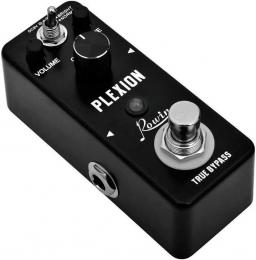
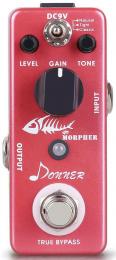
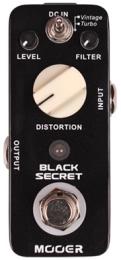
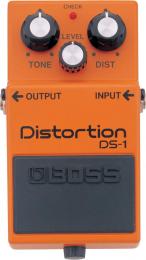
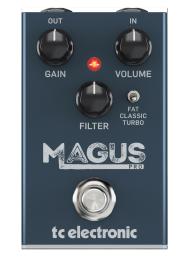
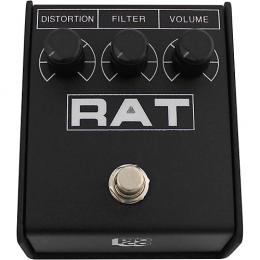
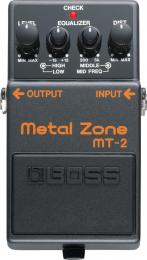
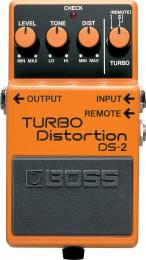
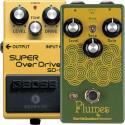
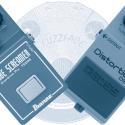
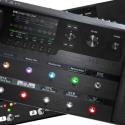
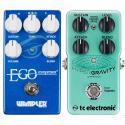
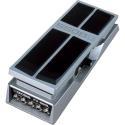
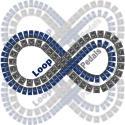
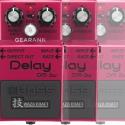
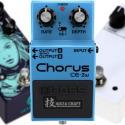
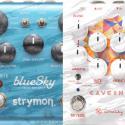
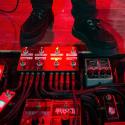




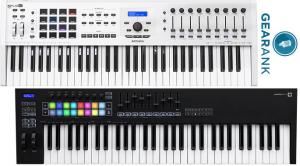
Comments
Publication of our 2024
Submitted by Alexander Briones on
Publication of our 2024 Edition resulted in a couple of pedals coming off the recommended list above:
- Behringer UM300 Ultra Metal
- MXR M78 Custom Badass '78
- MXR M104 Distortion+
- MXR M75 Super Badass
Publication of our July 2022
Submitted by Jason Horton on
Publication of our July 2022 Edition resulted in the Electro-Harmonix Metal Muff coming off the recommended list above due to a price increase that made it ineligible for this guide.
We have removed the TC
Submitted by Jason Horton on
We have removed the TC Electronic Dark Matter due to a price increase.
We've removed the Boss DS-2
Submitted by Jason Horton on
Today we removed the following pedals from the recommended list above due to price increases to over this guide's limit of $100:
GOOD LISTE.
Submitted by ZAKK (not verified) on
GOOD LIST.
As a result of our January
Submitted by Jason Horton on
As a result of our January 2020 update, which included limiting our recommendations to pedals under $100, the following great pedals came off our recommended list but you can still read our analysis of them:
Dude what the hell is this
Submitted by Nunya (not verified) on
Dude what the hell is this list? The DS-1 and Metalzone are some of the absolute worst distortion pedals with no midrange at all. Good luck trying to cut through a mix with those.
There were two dudes and a
Submitted by Jason Horton on
There were two dudes and a dudette that worked on this guide :)
The selection methodology is described above - note that the Boss DS-1 wasn't in our recommended list but included as an 'honorable mention' due to it's popularity and often being the first distortion pedal many guitarists try.
The Boss MT-2 Metal Zone was included in our recommended list based on its high ratings, but if you read what we said again, you'll notice that we mentioned the controversy surrounding it in the first paragraph and went on to describe the mid-range issue in the second paragraph.